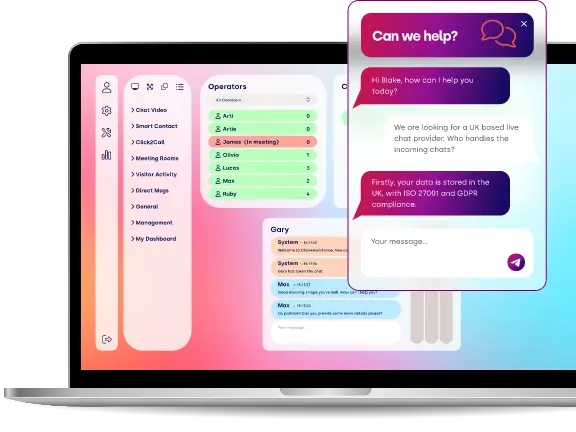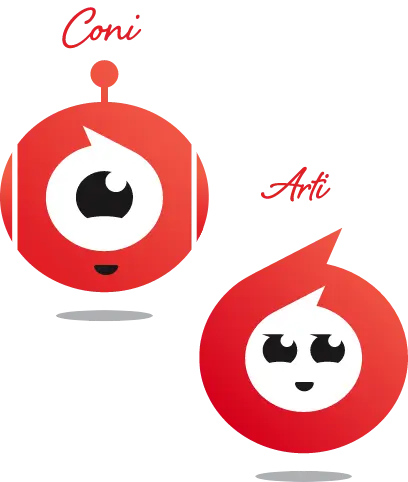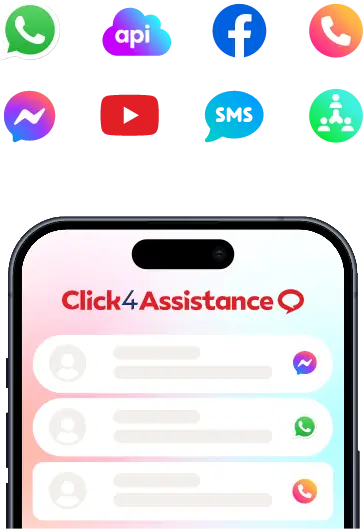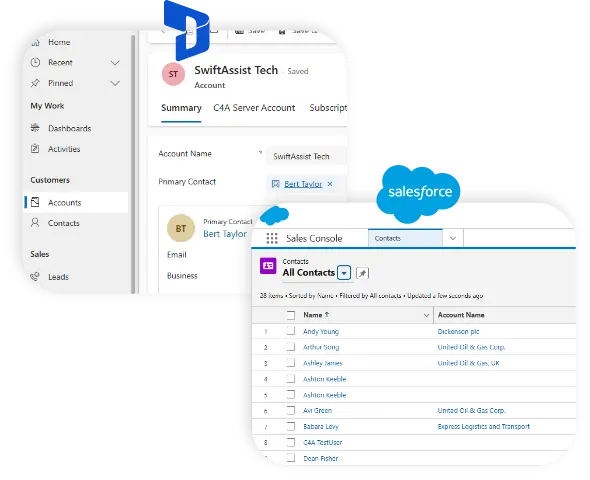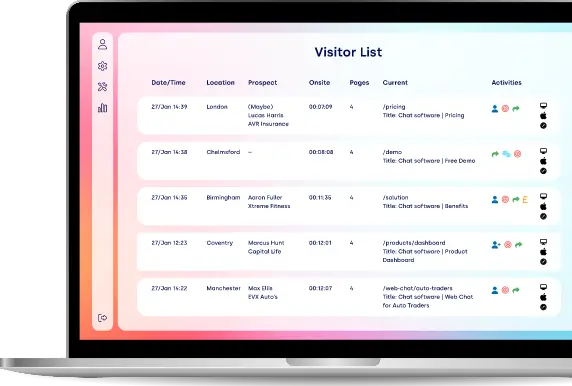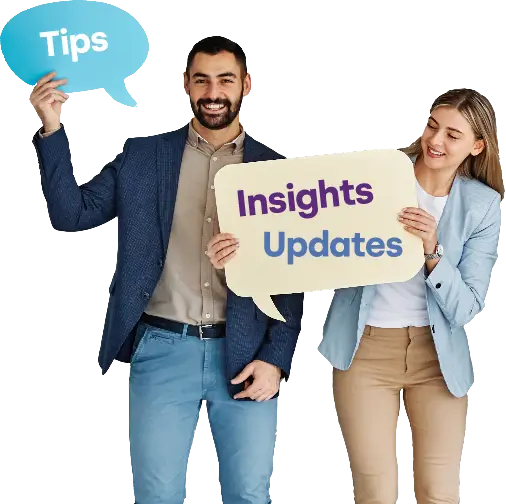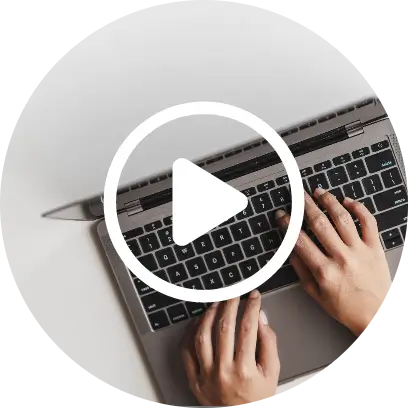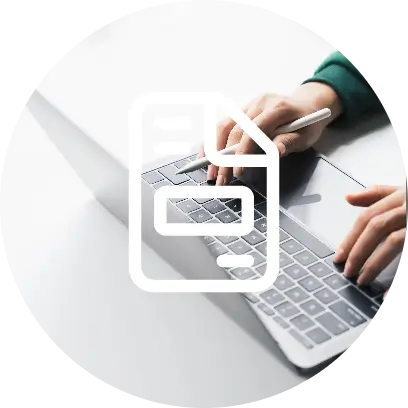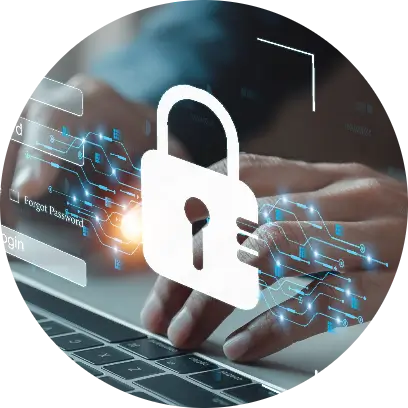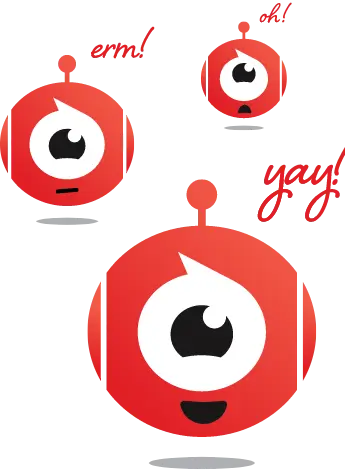WhatsApp Broadcast for Business: A Complete Guide
WhatsApp Broadcast lets you send a single message to multiple people at once, but the coolest part is that it shows up as if you’re having a personal chat with each customer.
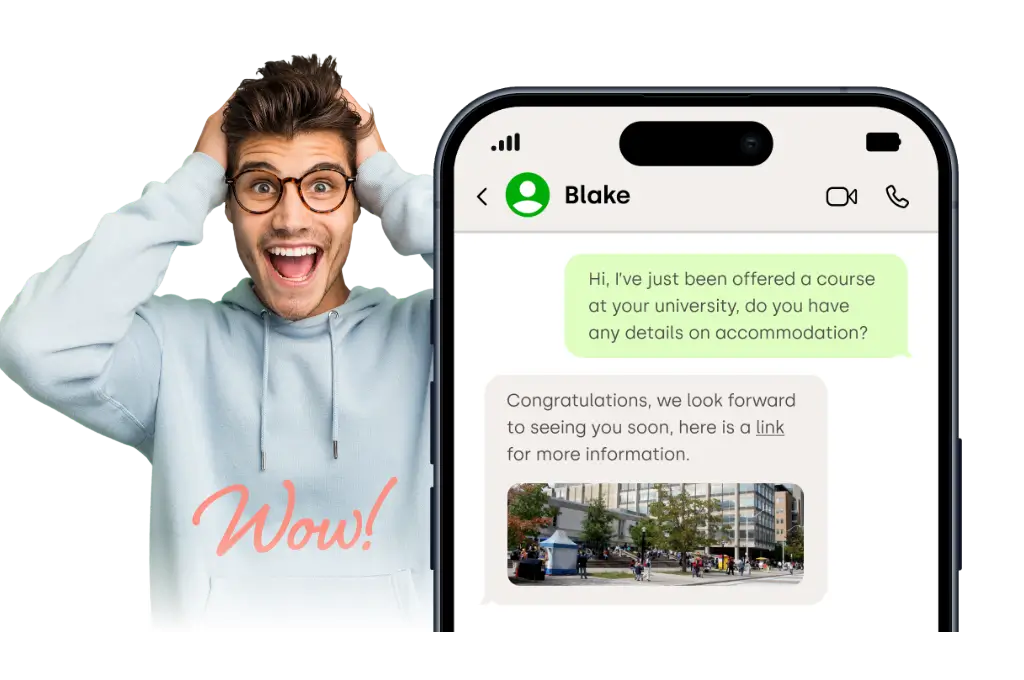
In today’s fast-paced digital world, if you run a business, you’ve probably noticed that messaging apps have evolved far beyond just being tools for casual chats. They’ve become for vital for marketing, customer support, and building connections. Among these platforms, WhatsApp stands out as a major player. With over two billion users, it’s where your customers are already hanging out – and WhatsApp Broadcast is one of the best ways to reach out to them.
If you’re looking to manage team access and grow your business, check out WhatsApp for Business Multiple Users. Want to boost your customer support? Dive into Customer Service for WhatsApp Business. Interested in multichannel messaging? Discover how Facebook Messenger for Business Website can take your WhatsApp strategy to the next level!
This guide is here to walk you through all the key points: understanding WhatsApp Broadcast, why it matters for businesses, how to make the most of message templates, and why sticking to the 24-hour messaging rule is crucial.
WhatsApp Broadcast allows businesses to reach out to customers on a larger scale while still keeping that personal touch.
What is WhatsApp Broadcast for Business?
Let’s set the record straight right from the start – WhatsApp Broadcast is not the same as WhatsApp Groups. A lot of business owners mix them up at first, but understanding the difference is really important.
When you use a broadcast list, you can send one message to many (or even hundreds) of customers all at once. To them, it doesn’t feel like a mass message; it feels like a personal, direct chat with your business. This means you won’t have to deal with awkward “who is this person in the group?” moments, unexpected replies from other customers, or chaotic message threads.
Think of it this way: WhatsApp Groups are like a conference call where everyone can hear each other. On the other hand, WhatsApp Broadcast is more like making individual phone calls – but doing it all at the same time.
For businesses, this is a game changer. It enables you to communicate on a larger scale while still providing that personal, one-on-one touch that customers really appreciate.
Why Should Businesses Use WhatsApp Broadcast?
So, why should you care about broadcast messaging? The answer is simple: it’s all about efficiency and making an impact.
Here are some compelling reasons why businesses – from cozy little shops to big corporations – are jumping on the WhatsApp Broadcast bandwagon:
- Time and Energy Savings – Instead of sending the same message to countless people one by one, you just write it out once and hit send. Just like that, hundreds of customers get the message at the same time.
- Professional Appearance – No one wants to be stuck in a messy group chat with strangers. With broadcast messaging, your communication feels like a personal message. Discover the advantages of WhatsApp Broadcast for businesses.
- Increased Open Rates – Let’s be real – emails often get ignored. Many people won’t even bother to open marketing texts. But with WhatsApp? Messages here are opened and read at jaw-dropping rates, often over 90%.
- Versatile Usage – You can use broadcast for just about anything:
- Announcing new products or launches.
- Sending out discount codes or promotions.
- Sharing important updates like “store closed for renovations”.
- Reminding clients about appointments.
- Confirming deliveries.
- Building Strong Customer Relationships – Since the messages feel personal, customers are more likely to engage. They respond, they click, they ask questions. This opens up more opportunities to build relationships and boost sales.
As one marketing consultant put it: “WhatsApp Broadcast gives you the reach of email marketing with the intimacy of a phone call.” Honestly, that’s spot on!
How to Setup WhatsApp Broadcast for Businesses
So, you’re probably now wondering, how do you actually get this set up? Don’t worry – it’s easier than you might think!
Here’s a straightforward guide to using the WhatsApp Business App (we’ll touch on the API later):
- Open the WhatsApp Business App
- Head to your main chat screen
- Tap on the menu
- On Android, you’ll find it as three dots. On iPhone, look for “Broadcast Lists” in the top left corner.
- Create a New Broadcast List
- Select “New Broadcast” and pick the contacts you want to include.
- Compose Your Message
- Make sure it's clear, engaging, and tailored to your customers.
- Send it
- Everyone on that list will get it as if you personally messaged them.
Pretty straightforward, right? But here’s the catch:
You can only send to 256 contacts in each broadcast list. Also, the recipients need to have your number saved in their contacts.
So, while this method is fantastic for smaller businesses or targeted campaigns, it might feel a bit limiting as you expand. That’s where the WhatsApp Business API comes into play (we’ll dive into that in detail later).
And here’s a handy tip: Organise your customers into different broadcast lists. For example, one for loyal customers, another for new leads, and one for those who haven’t engaged in a while. This way, you can tailor your messages instead of sending the same one to everyone.
Expanding with the WhatsApp Business API
If you’re running a growing business, you’re likely to hit the limits of the standard WhatsApp Business App sooner or later. Think about it - 256 contacts per broadcast list might work for a small boutique or when you’re juggling a few clients. But what happens when you have thousands of customers spread out across different regions, speaking various languages, and expecting instant updates?
That’s where the WhatsApp Business API steps in to help.
This API isn’t just a souped-up version of the app; it’s a whole new ballgame. Instead of manually creating lists and sending out messages, the API integrates smoothly with your CRM, customer support platform, or even your marketing automation tools. Suddenly, you’re not just blasting out generic messages - you’re running personalised, automated campaigns on a grand scale.
Here are some of the perks:
Unlimited Reach
Forget about the 256-contact cap. With the API, you can connect with thousands.
Automation Power
Set up triggers like “Send a shipping notification once the order is fulfilled” or “remind customers about their appointment a day in advance.”
Integration with Business Tools
Whether it’s Salesforce, Microsoft Dynamics, or your own custom dashboards, the API weaves messaging right into your daily operations.
Advanced Analytics
Keep an eye on delivery rates, open rates, responses, and tweak your campaigns accordingly.
Of course, there’s a bit of a learning curve. The API isn’t just a plug-and-play option – it usually requires setup through a WhatsApp Business Solution Provider (BSP). But if you’re serious about scaling, the rewards are definitely worth it.
Message Templates: The Core of WhatsApp Broadcast
Every business needs to understand this crucial point: when using the WhatsApp Business API, you can’t just send any message you want whenever you feel like it. To keep things spam-free and friendly for customers, WhatsApp requires businesses to use pre-approved message templates for any proactive communication outside the 24-hour customer service window.
These templates are the foundation of your broadcast strategy. WhatsApp sorts them into three main categories:
- Utility Templates
These are the straightforward, transactional messages that keep customers in the loop about their orders, appointments, or payments. They might not be the most exciting, but they get the job done.
Here a few examples:
Order confirmations: “Hi Emma, thanks for shopping with us! Your order #5678 is confirmed and will be shipped soon.”
Delivery updates: “Your package is out for delivery today and should arrive by 5 PM.”
Appointment reminders: “Just a reminder: Your haircut appointment at Bella Salon is scheduled for 2 PM tomorrow.”
Why they matter: Utility templates build trust and reliability. Customers appreciate these updates—they make their lives easier. Learn more about utility templates and their benefits.
- Authentication Templates
In the world of digital communication, security is key. Authentication templates are used for verifying identities, securing accounts, or authorising sensitive transactions.
Here are some examples:
One-time passwords (OTPs): “Your OTP to log in is 482193. It will expire in 10 minutes.”
Two-step verification: “Hi Alex, to verify your account, please enter the code 7412.”
Payment verification: “To proceed with your $500 transfer, please confirm by entering code 2299.”
Why they matter: Customers need to feel secure, and authentication templates help reassure them that your business takes security and privacy seriously.
- Marketing Templates
Marketing templates are a game changer! They let you share offers, promotions, or recommendations in a way that feels personal. But remember, they need to be customer-friendly and get the green light from WhatsApp first.
Here are some examples:
Promotional offers: “Exclusive deal: Enjoy 20% off your next purchase when you shop this weekend!”
Product recommendations: “Hi Sarah, based on your previous order, we think you’ll love our new skincare set.”
Seasonal campaigns: “Happy holidays! 🎉 Enjoy free shipping on all orders placed this week.”
Why are they important? Marketing templates turn WhatsApp into a money-making machine. They’re great for engaging with customers, but use them wisely - otherwise, you might find customers hitting that dreaded “Block” button.
How Template Approval Works
It's pretty simple
1. Draft your message (make it friendly, clear, and professional).
2. Submit it through your WhatsApp Business Solution Provider (BSP).
3. Wait for approval (usually just a few hours, but it can take up to a day).
4. Once it’s approved, you can use it again and again for as many customers as you want.
Pro Tip: Always try to personalise your messages. Add the customer’s name, order number, or even an emoji. Instead of sounding robotic, aim for a warm, human touch.
As one WhatsApp consultant put it: “A good template isn’t a broadcast - it’s a conversation starter.”
All Messaging Channels from One Platform
Handle all your customer interactions from live chat, WhatsApp and Facebook Messenger within one powerful platform.
Best Practices for Using WhatsApp Broadcast in Business
Now that you’ve got an understanding on what WhatsApp Broadcast is, how it works, and the importance of message templates along with the 24-hour rule, let’s dive into the big question: how can you make the most of it for your business without annoying your customers or stepping on any toes?
Here are some tried-and-true best practices:
- Segment Your Audience
Don’t treat all your customers the same way. Instead, break them down into groups like:
- New Leads
- Loyal Customers
- Those who haven't shopped in the last 90 days
- Regional segments (if your business serves different cities or countries)
By segmenting your audience, you can tailor the right message for the right people. A promotion for “new arrivals” might excite a loyal shopper, but it could overwhelm someone who hasn’t made a purchase yet.
- Manage Frequency
You definitely don’t want to be “that business” that customers dread seeing pop up in their notifications.
A good rule of thumb is:
- Utility messages: Send as needed (customers expect these).
- Marketing messages: Keep it to 1–2 per week at most.
Less is more. As the saying goes, “People don’t dislike marketing—they dislike bad marketing.”
- Personalise, Personalise, Personalise
Nothing feels worse than being treated like just another number. Use the customer’s name, reference their last purchase, or suggest items based on what they like. With the API, you can scale personalisation effectively.
For example, instead of saying: “Here’s our new catalogue.”
Try: “Hi David, since you loved our winter jackets, we thought you’d enjoy a sneak peek at our new autumn collection 🍂.”
- Get Permission First
This step is super important. WhatsApp requires you to get opt-in consent before you can send out broadcast messages. In other words, your customers need to give you the green light to receive updates from you.
Here are some ways to gather those opt-ins:
- Registration forms on your website.
- QR codes in your store.
- Conversations with customer service.
- Opt-in checkboxes during checkout.
The key here is being transparent. Let people know what kind of messages they can expect and how often they’ll hear from you.
- Keep an Eye on Things, Evaluate, and Improve
Don’t just send your messages and forget about them. Make sure to keep track of:
- Delivery rates.
- Open rates.
- Response rates.
- Opt-out rates.
If a campaign isn’t hitting the mark, it’s time to tweak your approach. A spike in opt-outs might mean you’re sending messages too often or that they’re not providing enough value.
Remember: "Data shows what customers might not say directly to you."
Potential Challenges and How to Tackle Them
Of course, no system is perfect. WhatsApp Broadcast comes with its own set of challenges that you'll need to work through.
- Customers Need to Save Your Number
With the Business App, only those who have your number saved will get your broadcasts. This can feel a bit limiting.
Solution: Encourage customers to save your contact by offering some perks. For example, you could say, "Save our number to unlock exclusive deals on WhatsApp."
- Delays in Template Approval
Sometimes, WhatsApp might take hours - or even a whole day - to approve new templates. This can be pretty stressful, especially if you're on a tight deadline.
Solution: Stay ahead of the game. Submit your templates a few days early. Create evergreen templates that you can use over and over again.
- Risk of Being Flagged as Spam
Sending out irrelevant or too many messages can lead to people blocking you. A high number of blocks can hurt your sender reputation.
Solution: Focus on providing value. Always ask yourself: "If I received this message, would I find it useful?" If the answer is no, it's best to hold off on sending it.
- Limited App Functionality for Large Businesses
The WhatsApp Business App is great for smaller companies, but if you're managing thousands of customers, it can quickly become a bit much.
Solution: Think about upgrading to the WhatsApp Business API for improved scalability, automation, and integration.
- Compliance Rules Can Be Tricky
With all the opt-ins, template approvals, and that 24-hour response window, it’s easy to make a mistake.
Solution: Team up with a trustworthy WhatsApp Business Solution Provider (BSP) who can help you stay compliant.
The Future of WhatsApp Broadcast for Business
So, where are we headed with this? WhatsApp Broadcast isn’t just a quick fix - it’s part of a bigger trend: conversational commerce.
We’re stepping into a time when customers don’t want to download apps, sift through websites, or be left hanging on hold. They want to chat with businesses just like they do with their friends.
Here’s a sneak peek at what’s coming up:
AI-Driven Personalisation
Imagine AI chatbots teaming up with broadcast lists to create messages that feel like they were written just for you. That’s the future of personalised communication!
Enhanced Integration with Other Channels
WhatsApp won’t be working alone. Businesses will link it with email, SMS, and platforms like Facebook Messenger to create a seamless communication experience.
More Engaging Templates
WhatsApp is already experimenting with templates that include buttons, quick replies, and product carousels. Soon, broadcasts will do more than just inform - they’ll empower customers to take action right away.
Increasing Adoption Across Various Sectors
From retail and healthcare to education and real estate, more and more industries are jumping on the WhatsApp bandwagon for marketing, customer support, and secure communications. According to Gallabox, by 2025, 80% of large enterprises plan to use the WhatsApp Business API, showing its growing influence across sectors.
In a nutshell, WhatsApp Broadcast is evolving from a simple bulk messaging tool into a key player in digital customer engagement.
Frequently Asked Questions)
- Are customers aware that they are included in a broadcast list?
Not at all! Each person thinks they’re having a one-on-one chat with your business. Any replies go directly to you, not to everyone on the list.
- Can I send broadcasts to customers who haven't saved my number?
If you’re using the WhatsApp Business App, customers need to save your number to get your broadcasts. But with the API, you can reach out to customers who have opted in, even if they haven’t saved your number.
- What happens if I message a customer after the 24-hour window without a template?
Your message won’t go through. To reconnect after 24 hours, you’ll need to use an approved message template (like Marketing, Utility, or Authentication).
- Are marketing templates guaranteed to be approved by WhatsApp?
Not always. WhatsApp reviews each template to ensure its friendly and not spammy. Templates that come off as too pushy or confusing are likely to be rejected.
- Is WhatsApp Broadcast better than email marketing?
It depends. Email is great for detailed information and reaching a wide audience, while WhatsApp shines in delivering quick, personal, and engaging communication. Many businesses find that using both strategies together yields the best results.
Conclusion
By now, you’ve uncovered the incredible potential that WhatsApp Broadcast holds for businesses of all sizes. It’s not just about firing off messages; it’s about building relationships, creating timely interactions, and enhancing your communication while keeping that personal touch intact.
With the WhatsApp Business App, small businesses can easily manage targeted broadcasts for up to 256 contacts in each list. For larger companies, the WhatsApp Business API opens up a world of automation, personalisation, and smooth integration with CRMs and customer support systems.
That said, it’s crucial to remember that it’s not just about having the right tools – you need to follow WhatsApp’s guidelines. This means using message templates (Marketing, Utility, and Authentication) for proactive outreach, respecting the 24-hour customer care window, and always prioritising value and relevance.
In the end, customers aren’t looking for spam. They want valuable updates, helpful reminders, and maybe the occasional personalised offer. When done right, WhatsApp Broadcast becomes more than just a marketing tool – it transforms into a genuine connection between your business and the people who keep it thriving.
So, whether you’re launching a new product, confirming an appointment, or providing real-time order updates, remember this: every broadcast is a chance to connect, engage, and grow.
See Click4Assistance in Action
Schedule a demo with our experts and explore the power of live chat and AI-driven engagement tools tailored to your business.

